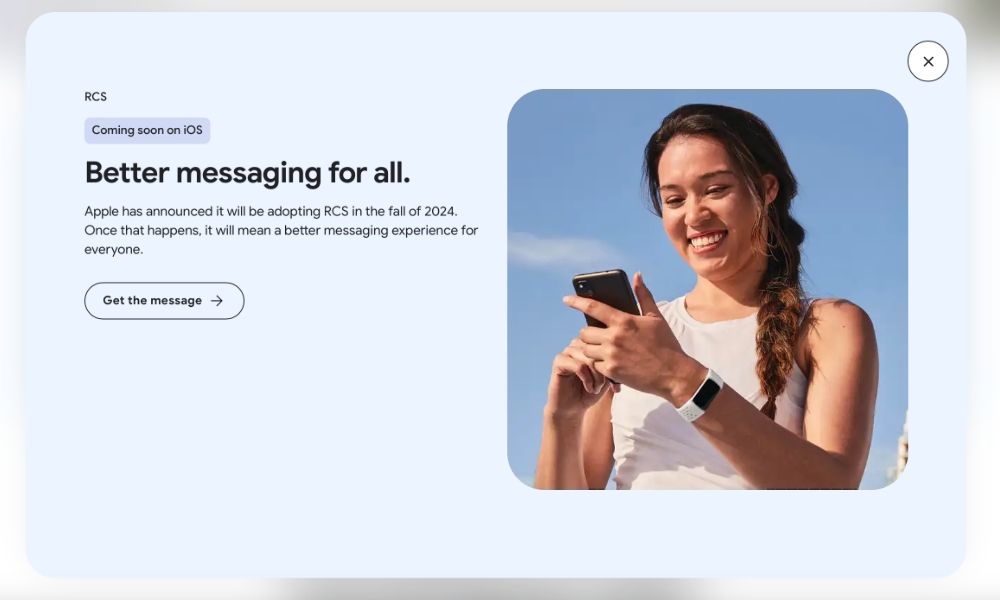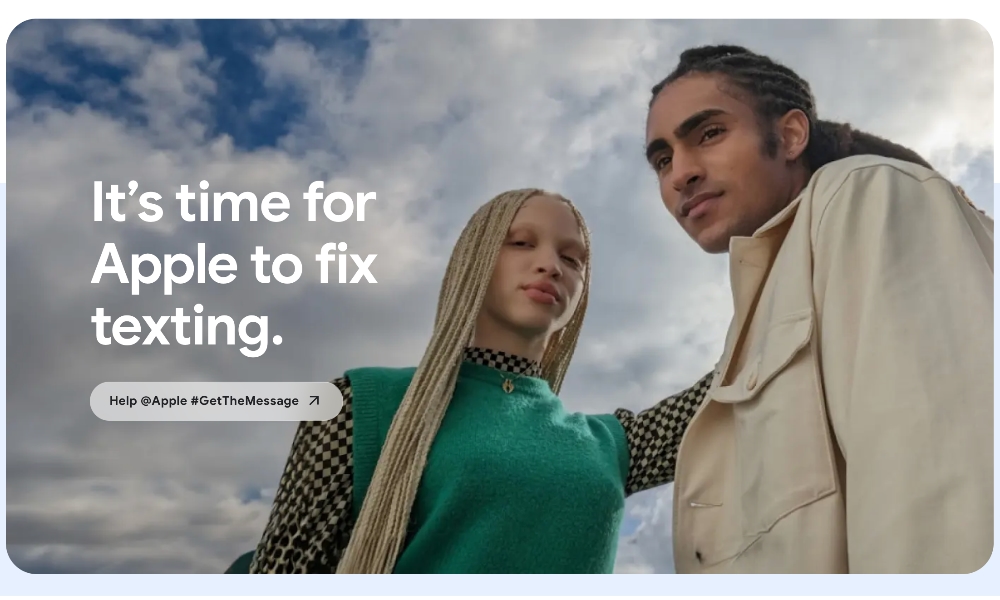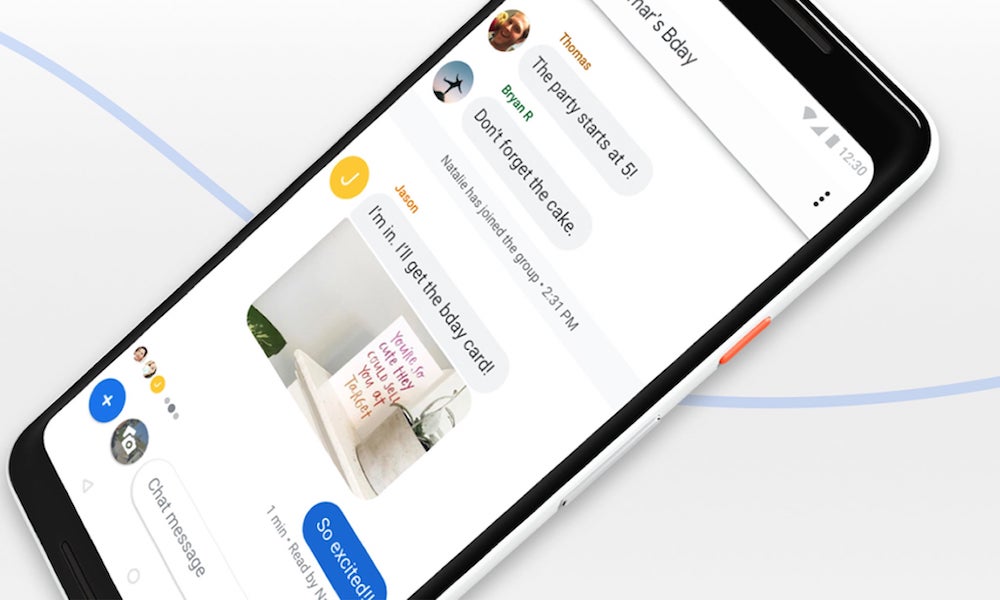Google Confirms Apple’s Plans for RCS Messaging | Here’s What That Means
 Credit: TeroVesalainen / Shutterstock
Credit: TeroVesalainen / Shutterstock
Toggle Dark Mode
After years of holding out on RCS messaging, Apple made a shocking turnaround last fall when it officially announced RCS support was on its 2024 roadmap for the iPhone.
While Apple didn’t offer any specifics at the time, most believed it would be later in the year, possibly coinciding with the release of iOS 18 in the fall. Now, Google has given us additional confirmation of that general timeline, although the search giant may have spoken out of turn.
Yesterday morning, the folks over at 9to5Google noticed the company had set up a new landing page for Google Messages that, among other things, added that Apple would adopt RCS in the “fall of 2024.”
Apple has announced it will be adopting RCS in the fall of 2024. Once that happens, it will mean a better messaging experience for everyone.
This block was tucked inside of an expandable “RCS” section that was the third block down, directly below Photomoji, that also outlined support for hi-res photos and videos, typing indicators, animated emoji and reactions, and better chat integration.
That entire section has since been removed, suggesting that Google may have either jumped the gun or that it was merely speculation based on Apple’s broader 2024 announcement and the expected release date of iOS 18, which is widely expected to arrive sometime in September. However, it wasn’t just the Apple portion that disappeared — the entire RCS section is gone.
This may have also been half-baked on Google’s part. While the paragraph had a generally positive spin, it still prominently displayed a “Get the message” button that led to Google’s 2022 RCS campaign against Apple’s refusal to adopt RCS. That page is still there, but linking to it from an announcement that Apple is bringing RCS support to the table feels a little passive-aggressive on Google’s part.
It stands to reason that RCS will be baked into iOS 18, but like many features on Apple’s roadmap for each iOS release, it may not come in the initial iOS 18.0 release; it could be iOS 18.1 or iOS 18.2 before it’s ready to go.
Hopefully, we’ll get more information when Apple unveils iOS 18 at its Worldwide Developers Conference (WWDC) in June, but it’s unlikely to give us any specifics. At most, we may see it flagged as “Coming Later This Year” — typically code for “Don’t Expect it in September.”
What RCS Will Mean for You
RCS stands for Rich Communication Services and is the next generation of SMS/MMS messaging. It promises a more modern cross-platform messaging experience between today’s smartphones.
Sadly, even though RCS was an open standard put forward by the GSM Association well over a decade ago, there were so many cooks in the kitchen that it never really got off the ground until Google picked up the ball from the carriers and ran with it.
Since then, RCS has become a core part of Google’s Android messaging platform, effectively giving Android users many of the same features that Apple users have enjoyed with iMessage for years, but with the promise of greater interoperability.
Granted, Google also messed with its own proprietary messaging systems for years before adopting RCS, but since doing so, the company has been pushing the standard heavily, while Apple has been resisting just as strongly, insisting that it wasn’t a priority for Apple customers.
It’s not entirely clear what’s behind Apple’s sudden change of heart, but the common belief is that Apple decided it would be a good way to stay ahead of the regulatory scrutiny it’s now facing. Whatever the reasons, it’s ultimately a good thing for iPhone owners who regularly communicate with their Android brethren.
Since Apple has no plans to abandon iMessage or stop improving it, not much will change for chats between Apple devices. We expect it to be business as usual on that side of things.
However, once RCS is available, you’ll no longer need to dread the green bubble when communicating with users of modern Android devices. Although there’s a good chance the bubbles will still be at least some shade of green, RCS will introduce several new capabilities similar to iMessage:
- Exchanging high-resolution photos and videos.
- Typing status indicators.
- Delivery and Read receipts.
- Tapbacks and other reactions.
- Group chats that actually work and can be properly managed.
Sadly, one thing that we’re not expecting from Apple’s implementation of RCS is end-to-end encryption (E2E). Even though Google supports E2E in Google Messages, that’s a proprietary extension that Google has tacked onto RCS and isn’t part of the RCS standard. While Apple will likely embrace E2E for RCS if it ever gets adopted into the standard, it’s understandably reluctant to support vendor-specific extensions.
This adds the benefit of keeping iMessage ahead of what RCS offers. iMessage has supported E2E since the very beginning, and today, it provides features that RCS doesn’t — even between Google devices — such as the ability to edit and unsend messages and send money using Apple Cash.
RCS still shares one SMS/MMS limitation: it’s a phone-specific technology, which means iPads and Macs won’t be able to play along on their own. Apple will probably allow RCS messages to be relayed from these devices through a user’s iPhone, just like SMS/MMS messages can be today, but you’ll still communicate using a phone number, and your phone will need to be on and have cellular coverage for RCS to work.
Apple will also likely keep its blue bubbles to denote iMessage conversations and green for everything else. However, we’re hoping that RCS gets a different shade of green to distinguish it from plain old SMS/MMS messages, which are significantly less functional.
Although RCS will be helpful when communicating with modern smartphones, there will still be times when you need to fall back to SMS/MMS. For one thing, like iMessage, RCS requires a mobile data connection, while SMS can run over a voice-only cellular connection. If you’re out of data coverage, you’ll be stuck using SMS messages no matter who you communicate with. Further, RCS will likely never come to non-smartphone devices, so if you’re texting somebody using a “feature phone,” you’ll be using SMS.
Lastly, no matter how hard Google is pushing RCS on its end, it’s still a carrier-based service. That means if the person you’re communicating with is on a carrier that doesn’t support RCS, they won’t be able to use it, even if they’re using a top-of-the-line Android phone with the latest operating system updates.
Fortunately, while the big US carriers tried to go their own way a few years ago and develop their own flavor of RCS through the Cross Carrier Messaging Initiative (CCMI), that collaboration ultimately fell apart, and today, most carriers — and all the major North American ones — have adopted the RCS Universal Standard.
Some of Apple’s reluctance to embrace RCS may have stemmed from this fragmentation. It wasn’t until last year that Samsung abandoned its own version of RCS, called “Advanced Messaging Services,” and chose to adopt Google Messages instead. Some carriers also decided to build their own RCS implementations that only worked with their messaging apps before realizing they should get with the program and adopt the more open RCS standard.
In other words, RCS was somewhat of a mess until recently. Apple’s sudden willingness to jump in may be nothing more than a result of its deciding that the waters are now calm enough.











